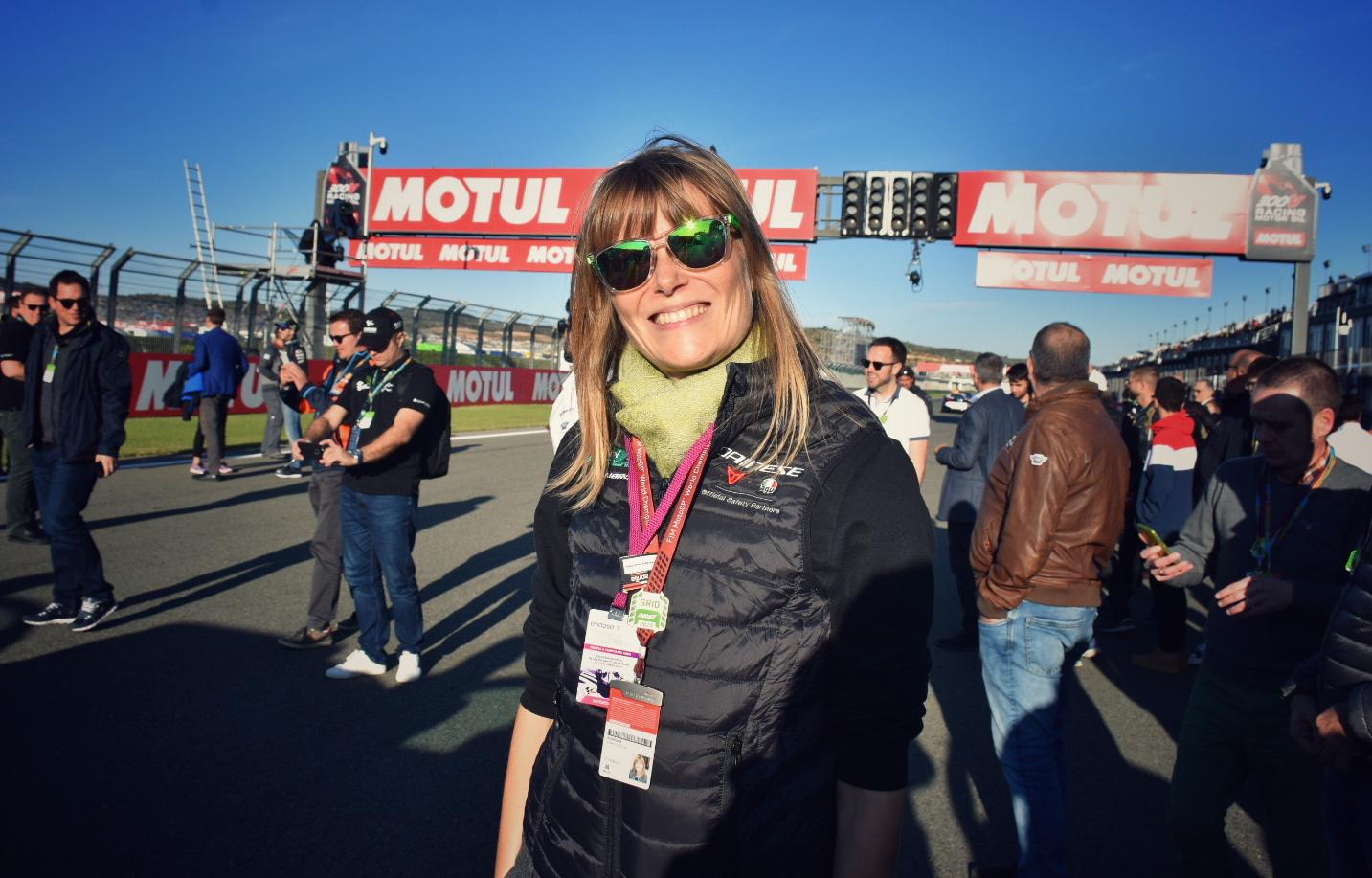
It very well may have taken a woman to make a breakthrough in the world of motorcycling (but perhaps this is also a rather stereotypical idea). The woman we are talking about is Livia Cevolini. As the daughter of the director of a supply company for Formula 1, Cevolini was brought up with a love for racing. When her father’s company When her father’s company went through a rough patch during the 2008 crisis, she realized that the time had come to change tack. Why not develop a high-performance electric motorcycle? No sooner said than done…

Cevolini could spend hours talking about all the stumbling blocks of those first years, about a market that was not ready, but it is more interesting to know that Energica (as the new company was dubbed) is currently setting the standard in electric motorcycling at the highest level. Since 2018, Energica has been selected by Moto E class organization, the electric counterpart of MotoGP, as the sole manufacturer for all participating teams.
One advantage is that the 18 riders are seated on identically-prepped racing machines, which brings out their own individual performances better. According to Cevolini, the experience in the electric MotoGP has meant that the overall performance of the electric motorcycle has been improved even further.
The Ego road model (169 hp, torque: 215 Nm, top speed: 240 km/h, acceleration 0-100m in 2.6 sec, battery autonomy: 420 km) has the kind of high performance that even Ducati would bow to. This also puts an end to the story that batteries cannot handle high performance levels, or only for a short period of time.
But in the beginning, in 2008, there was nothing. “We started out with a blank piece of paper at the start of our development of the electric motorcycle,” says Cevolini at Energica’s headquarters, 15 kilometers north of Modena (central Italy). “Fortunately, we had solid ground to stand on, because our family business had always been in the racing business. Still, an electric vehicle was something absolutely new for us. That’s why we started with the battery and built the rest of the motorcycle around it. In order to have the best enigineering, you start with the basics,” says Cevolini, a mechanical engineering graduate.
Although the motorcycle was built from scratch, it doesn’t look any different from other motorcycles. “The fact is that human beings have two arms and two legs, and therefore the shape of the motorcycle has to be more or less as we know it today,” he says. Plus there is one more thing. An electric motorcycle is already so innovative because of its electric power unit that riders have to master it first. In order not to have to introduce more new things, it’s best in the long run to stick with a model that people are accustomed to. We can still tinker around with the aesthetics in the future”.

Apart from its shape, the motorcycle is traditional in other ways too. It comes in black, grey and red – the typical racing colors. “Our first motorcycle was white and green, but those colors just didn’t sell. It’s hard to change people’s minds.”
An important element when it comes to riding heavy motorcycles is the sound of the engine. For a lot of men – it’s mainly a guy thing Cevolini also acknowledges – that’s an added value. But something is changing. “The new generation and many of our customers have no problem with riding without the sound of a combustion engine. In fact, in the Netherlands, where our motorcycles are doing well by the way, we recently received a complaint that our engines were still making too much noise.” The 42-year-old Cevolini laughs heartily.
“But more and more motorcyclists are coming to understand that the motorcycling experience is only enhanced with electric motorcycles. You still enjoy riding a heavy motorcycle, but without the noise and smell that comes with it. This allows you to take in the surroundings much more. The experience becomes that much more complete”. Without mentioning Ducati’s name, Cevolini does have an idea why such a company, surely the benchmark for heavy and racing motorcycles, is skeptical about electric riding. Ducati would likely be that way so as not to scare off their customers. The company is undoubtedly well aware of where the futures heading and is already working on the development of alternatives to the gasoline engine.
Autonomous motorcycle
Cevolini says that the motorcycle world is invariably a step behind the four-wheeled world. There are -except for the number of wheels- a number of distinctions. One important difference is that riders of super motorcycles do so for recreational purposes. Few ride their Harley or Ducati to commute to work. The sensation of riding is paramount for them. For the time being, that apparently includes the roar of the motorcycle.
The autonomously-controlled vehicle – an almost certain future development of mobility – will likely pass the world of two wheels by. “The whole experience of motorcycling is that you keep control of the wheel yourself. It doesn’t make sense for something or someone else to ride for you. What does have a future is electronic support while you are riding. We are quite ahead with the development of sensors, cameras and other technology that can relay dangerous situations on the road to the rider in time.”

Cevolini says that they are also spearheading other innovations. For example, recently introduced in June, the EMCE engine is lighter in weight and more powerful than previous models. The water-cooled engine was developed in collaboration with Mavel, an Italian company that specializes in the development of electric engines.

